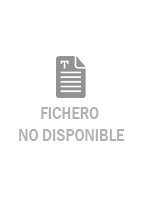Por favor, use este identificador para citar o enlazar este ítem:
https://hdl.handle.net/11000/36062Registro completo de metadatos
| Campo DC | Valor | Lengua/Idioma |
|---|---|---|
| dc.contributor.author | García Martínez, Santiago | - |
| dc.contributor.author | Grau Sánchez, Adrián | - |
| dc.contributor.author | Agulló Ruiz, Enrique | - |
| dc.contributor.author | Bustamante Muñoz, María Ángeles | - |
| dc.contributor.author | Paredes, Concepcion | - |
| dc.contributor.author | Moral, Raul | - |
| dc.contributor.author | Ruiz, Juan José | - |
| dc.contributor.other | Departamentos de la UMH::Biología Aplicada | es_ES |
| dc.date.accessioned | 2025-03-21T11:13:38Z | - |
| dc.date.available | 2025-03-21T11:13:38Z | - |
| dc.date.created | 2009-03 | - |
| dc.identifier.citation | Communications in Soil Science and Plant Analysis, 40: 445–452, 2009 | es_ES |
| dc.identifier.issn | 1532-2416 | - |
| dc.identifier.issn | 0010-3624 | - |
| dc.identifier.uri | https://hdl.handle.net/11000/36062 | - |
| dc.description.abstract | The effects of fertigation levels on parameters related to fruit quality were studied, using compost derived from winery wastes as growing media for a tomato crop. We evaluated five growing substrates: perlite and four composts derived from winery-distillery residues. Two levels of fertigation were applied: a standard fertigation for tomato crop and a half-level of fertigation obtained by a 50/50 v/v dilution. Our objective was to evaluate the possibilities of winery waste composts as an alternative to perlite as growing substrate. We tried to measure the effect of these organic substrates on yield and on the parameters more strongly related with fruit quality: tomato solid soluble content and titratable acidity. The commercial F1 hybrid variety of tomato ‘‘Boludo’’ was used. Significant differences among the levels of fertigation were found, but only small differences among the substrates could be observed. These results have been obtained under two different fertigation levels, one of them probably causing a slight level of salinity. The composts evaluated have shown adequate characteristics when used as substrates for a tomato crop, indicating the suitability of winery waste composts as an alternative to the growing media currently used. | es_ES |
| dc.format | application/pdf | es_ES |
| dc.format.extent | 9 | es_ES |
| dc.language.iso | eng | es_ES |
| dc.publisher | Taylor and Francis | es_ES |
| dc.rights | info:eu-repo/semantics/closedAccess | es_ES |
| dc.rights.uri | http://creativecommons.org/licenses/by-nc-nd/4.0/ | * |
| dc.subject | Perlite | es_ES |
| dc.subject | Grape mark | es_ES |
| dc.subject | Sludge | es_ES |
| dc.subject | Hydroponic | es_ES |
| dc.subject | Growing media | es_ES |
| dc.subject.other | CDU::5 - Ciencias puras y naturales::57 - Biología | es_ES |
| dc.title | Use of Composts Derived from Winery Wastes in Tomato Crop | es_ES |
| dc.type | info:eu-repo/semantics/article | es_ES |
| dc.relation.publisherversion | https://doi.org/10.1080/00103620802695099 | es_ES |
 Ver/Abrir:
Ver/Abrir:Use of compostsderived from winery wastes in tomato crop.pdf
212,13 kB
Adobe PDF
Compartir:
 La licencia se describe como: Atribución-NonComercial-NoDerivada 4.0 Internacional.
La licencia se describe como: Atribución-NonComercial-NoDerivada 4.0 Internacional.
.png)